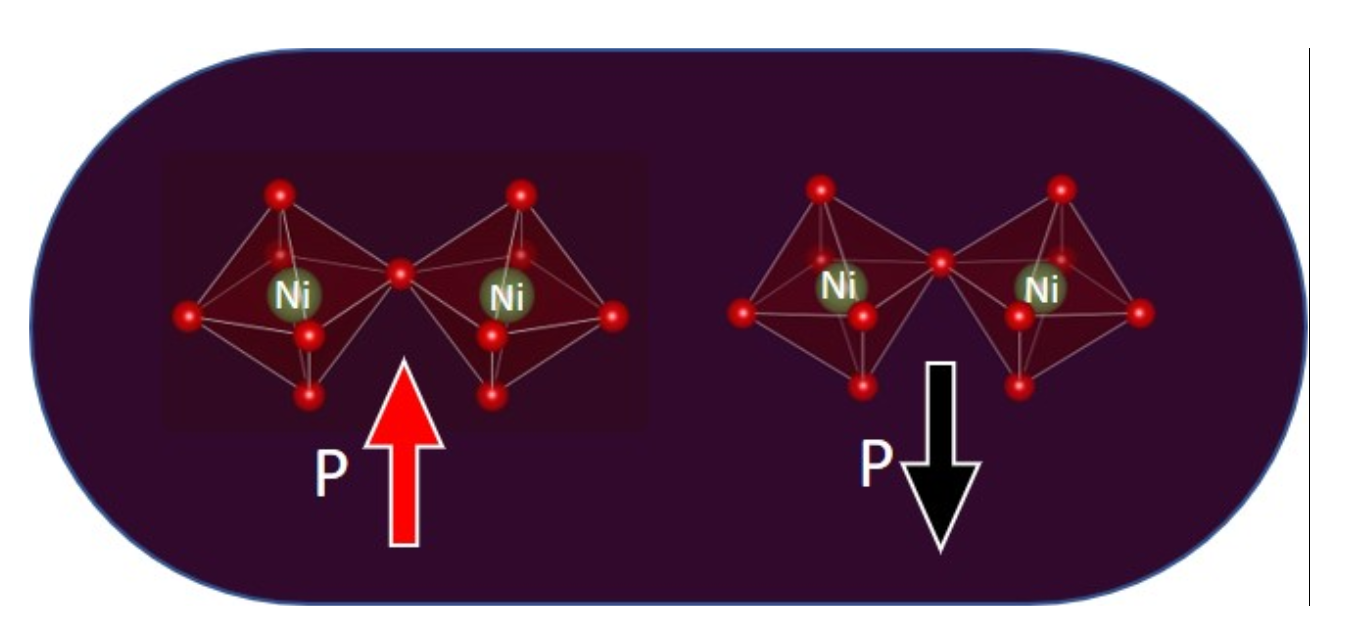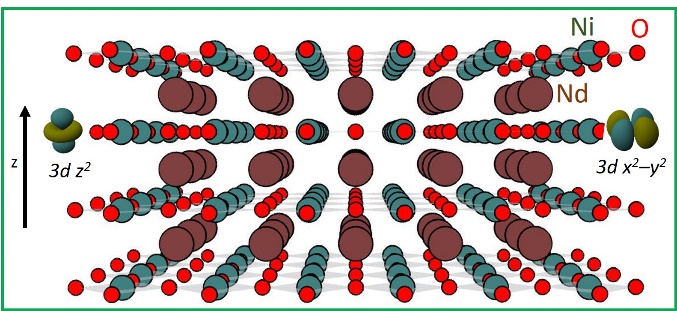Perovskite rare-earth nickelates exhibit a metal-to-insulator transition and a complex spin arrangement which onset temperatures TMIT and TNeel are controlled in bulk by steric effects1. Interface engineering of oxygen octahedra tilting as imposed by the symmetry and orientation of the substrate, has resulted an efficient pathway to modify both TMIT and TNeel values in nickelate thin films2.
In Strasbourg at the IPCMS we study how the effect of interfacial polar distortions induced by a ferroelectric polarization (P) may modify the Ni-O-Ni bond angles/lengths network. We use electrical transport and resonant elastic X-ray scattering to acquire information regarding the modified metal-to-insulator transition and magnetic properties.

Additionally, perovskite rare-earth nickelates RNiO3-based heterostructures (R being a rare-earth) have been the leitmotiv of intense theoretical and experimental research efforts assuming that they could mimic the high-Tc superconductivity of cuprates3,4.
The quest for such Ni-based high-Tc superconductors has reached a first success5: infinite-layer Nd0.8Sr0.2NiO2 thin films obtained after topotactic reduction of the perovskite Nd0.8Sr0.2NiO3 phase grown onto SrTiO3 (STO) single crystals, have been found to host superconductivity below 15 K. Despite some formal valence and crystal symmetry analogies with cuprates the electronic properties of infinite-layer nickelates are remarkably different establishing a new class of oxide superconductors which interest is in its own right. A finite spectral weight of Nd-5d bands6 (5dz² and 5dxy) at the Fermi level for which theoretical calculation (DFT+U, LDA) showed an important hybridization with the Ni-3d states, mark the main differences among the two layered superconductor families. As already pointed out by several theory groups, Ni-3dz² orbitals are thought to play a major role in the stabilization of the superconducting properties in this system7. They introduce a coupling along the c-axis with Nd-5d states, and the crystal field and/or the c/a ratio of the infinite-layer tetragonal structure may be used as a knob to modify the Ni-Nd hybridization degree. The Figure below schematically shows the infinite-layer tetragonal structure together with the two active Ni-3dx²-y² and Ni-3dz² orbitals.

At IPCMS we are studying different ways of synthesis in order to attempt an increase of the critical temperature by playing with the Ni-Nd hybridization degree. Meanwhile by XLD, XMCD and RIXS synchrotron-based technique we study their electronic structure as a function of the Sr-doping, aiming at establishing the main differences between NiO2 and CuO2 planes in the two families of doped nickelate and cuprate infinite-layers.
References :
1. Medarde, M. L. Structural, magnetic and electronic properties of RNiO3 perovskites (R = rare earth). J. Phys. Condens. Matter 9, 1679–1707 (1997).
2. Catalano, S. et al. Rare-earth nickelates RNiO3 : thin films and heterostructures. Reports Prog. Phys. 81, 046501 (2018).
3. Anisimov, V. I., Bukhvalov, D. & Rice, T. M. Electronic structure of possible nickelate analogs to the cuprates. Phys. Rev. B 59, 7901–7906 (1999).
4. Chaloupka, J. & Khaliullin, G. Orbital order and possible superconductivity in LaNiO3/LaMO3 superlattices. Phys. Rev. Lett. 100, 3–6 (2008).
5. Li, D. et al. Superconductivity in an infinite-layer nickelate. Nature 572, 624–627 (2019).
6. Botana, A. S. & Norman, M. R. Similarities and Differences between LaNiO2 and CaCuO2 and Implications for Superconductivity. Phys. Rev. X 10, 11024 (2020).
7. Pickett, W. E. The dawn of the nickel age of superconductivity. Nat. Rev. Phys. 3, 7–8 (2021).
